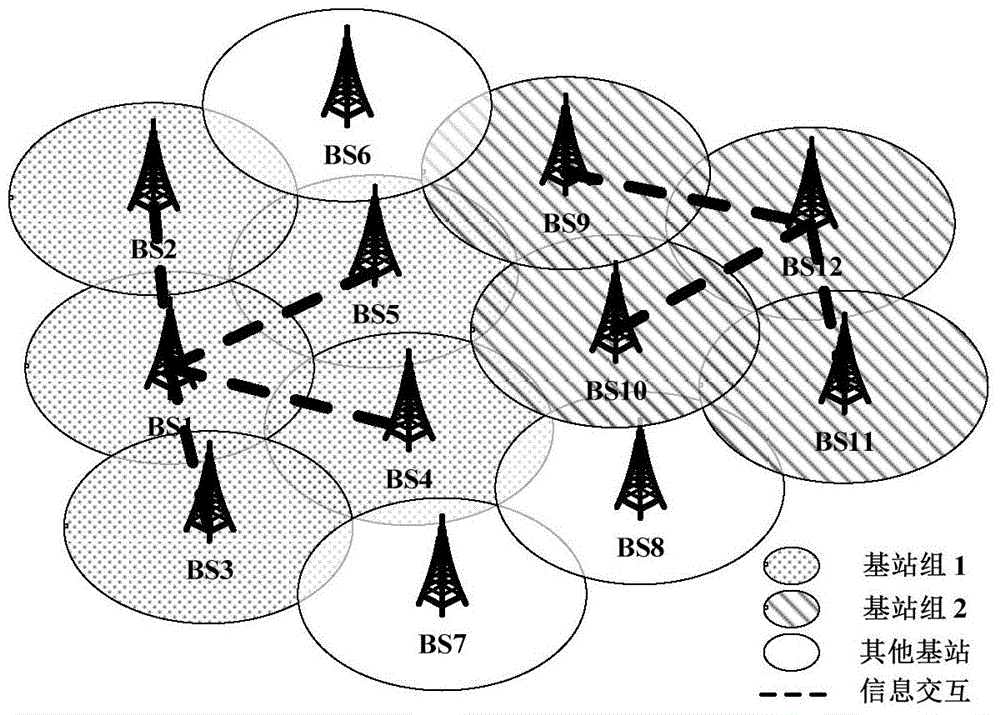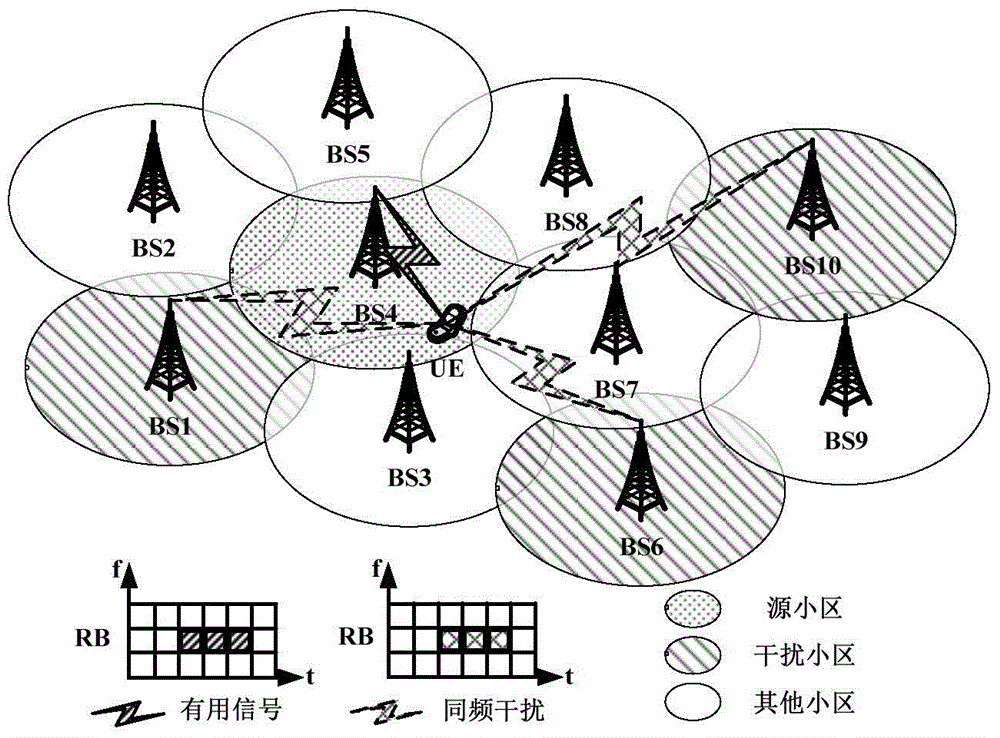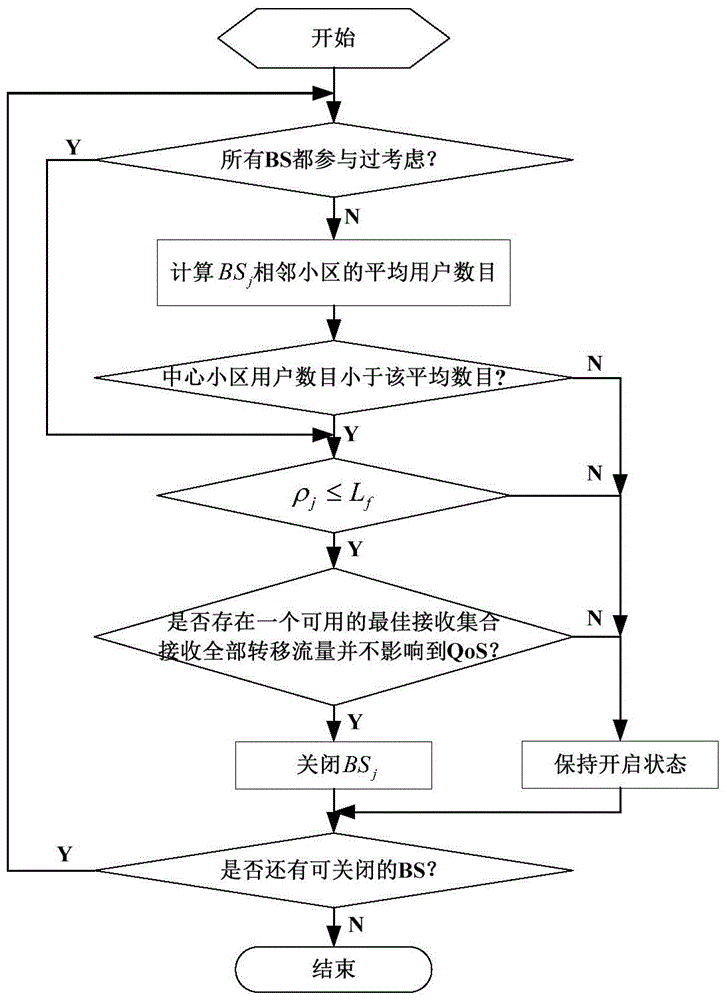Distributed user location awareness cell closing method for LTE-A cellular network
A technology of LTE-A and cellular network, which is applied in the field of energy resource management of LTE-A downlink cooperative communication in wireless communication, and can solve the problem of communication network consuming redundant resources, etc.
- Summary
- Abstract
- Description
- Claims
- Application Information
AI Technical Summary
Problems solved by technology
Method used
Image
Examples
Embodiment Construction
[0043] Below in conjunction with accompanying drawing of description, the specific embodiment of the present invention is described:
[0044] see figure 1 As shown, it is a conceptual diagram of the LTE-A ad hoc cellular network adopted in the present invention. Any base station only communicates user information and traffic information with its neighboring base stations. Although there is no above information exchange between non-adjacent base stations, they can influence each other through common adjacent base stations.
[0045] see figure 2 Shown is a schematic diagram of co-channel interference. The figure shows that only at the same time, the cell using the same resource block as the source base station will cause co-channel interference to the user served by the source base station.
[0046] see image 3 As shown in , it is a flow chart considering the joint consideration of the number of users and traffic information. This figure explains the cooperation flow of ...
PUM
 Login to View More
Login to View More Abstract
Description
Claims
Application Information
 Login to View More
Login to View More - R&D
- Intellectual Property
- Life Sciences
- Materials
- Tech Scout
- Unparalleled Data Quality
- Higher Quality Content
- 60% Fewer Hallucinations
Browse by: Latest US Patents, China's latest patents, Technical Efficacy Thesaurus, Application Domain, Technology Topic, Popular Technical Reports.
© 2025 PatSnap. All rights reserved.Legal|Privacy policy|Modern Slavery Act Transparency Statement|Sitemap|About US| Contact US: help@patsnap.com



